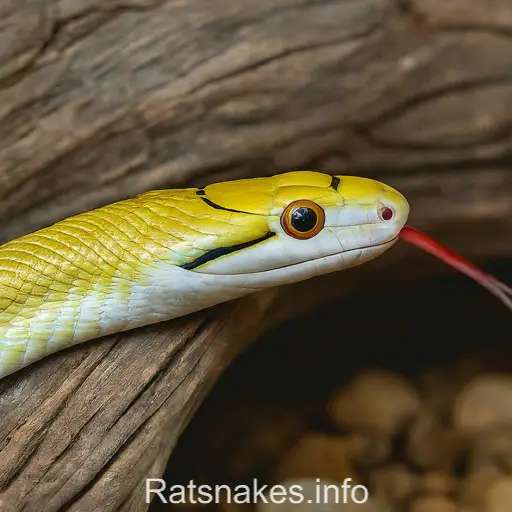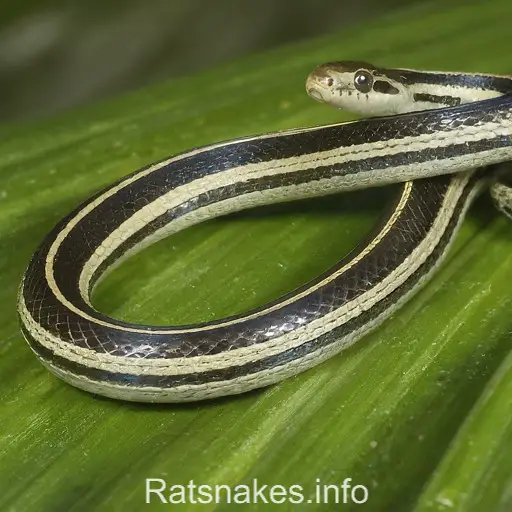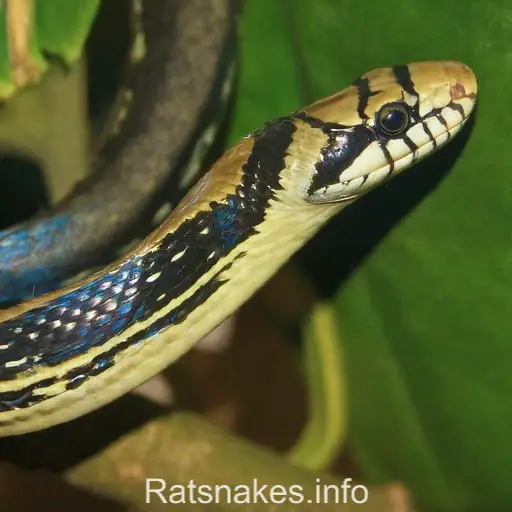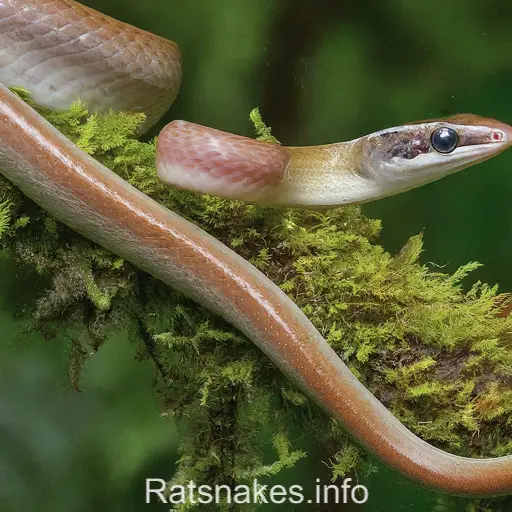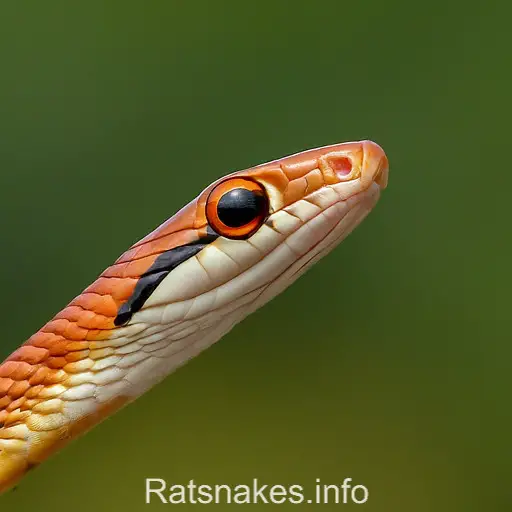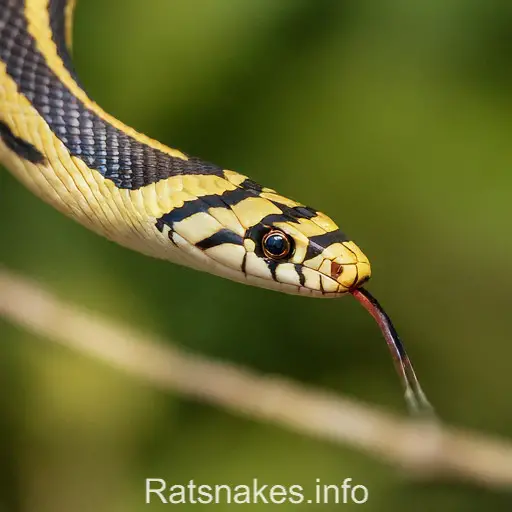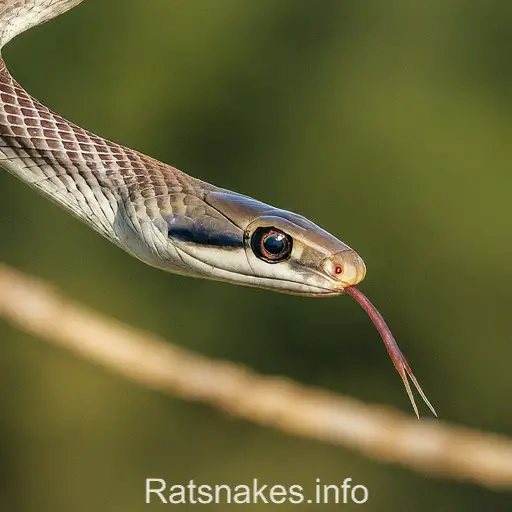
Welcome to our guide on the fascinating Gray Rat Snake (Pantherophis spiloides). These sleek reptiles are known for their striking appearance and remarkable abilities.
With their distinctive gray coloration and slender bodies, Gray Rat Snakes are a sight to behold in their natural habitat.
Join us as we delve into the world of the Gray Rat Snake, exploring their behavior, habitat, and unique characteristics.
Morphology of the Gray Rat Snake
The Gray Rat Snake boasts a physique that sets it apart from other snake species. Here, we delve into the key physical characteristics that define these fascinating creatures:
- Coloration: Their distinctive gray coloration, adorned with darker markings, helps them blend seamlessly into their surroundings.
- Size: These snakes can grow to impressive lengths, with adults typically reaching 3 to 6 feet.
- Pattern: They exhibit a series of blotches along their back, adding to their visually striking appearance.
- Scales: Smooth scales cover their bodies, contributing to their sleek and elegant profile.
- Elongated body: The Gray Rat Snake’s slender form allows it to navigate various terrains with ease.
- Head shape: Their triangular-shaped heads are equipped with keen senses to detect prey and predators alike.
Observing the morphology of the Gray Rat Snake offers valuable insights into their adaptation to their environment.
Behavior and Diet
When it comes to behavior, the Gray Rat Snake is primarily nocturnal, meaning it is most active during the night. This behavior helps them avoid predators and also allows them to hunt under the cover of darkness. They are excellent climbers and are often found in trees or other elevated areas. Their curious nature sometimes leads them into human structures, but they are non-venomous and pose no threat.
In terms of diet, Gray Rat Snakes are predators that primarily feed on rodents such as mice and rats. Their diet also includes birds, bird eggs, and small reptiles. Their hunting strategy involves constriction, where they wrap their bodies around their prey to suffocate them before consuming. This method is effective in ensuring their prey is subdued before consumption.
These snakes play a crucial role in controlling pest populations as they help keep rodent numbers in check. By preying on rodents, they contribute to balancing ecosystems and reducing the spread of diseases carried by these pests. The adaptations in their behavior and diet have made them successful hunters and an essential part of the ecosystem they inhabit.
Habitat and Distribution
Gray Rat Snakes, also known as Pantherophis spiloides, are commonly found in various habitats across the Southeastern United States. These non-venomous snakes prefer forested areas, including deciduous forests, pine forests, swamps, and rocky areas. Their environment of choice usually provides ample hiding spots and opportunities for climbing, as they are arboreal creatures.
Covering a broad geographic range, Gray Rat Snakes can be spotted in states such as Florida, Georgia, South Carolina, Mississippi, Louisiana, and parts of North Carolina. They are less commonly encountered in urban areas, as they thrive in natural environments that offer them suitable prey and places to seek refuge. These snakes are particularly fond of areas near water sources, where they can find food and the shelter they need to thrive.
The adaptability of Gray Rat Snakes to various habitats within their distribution range contributes to their successful survival. Despite encountering habitat loss due to urbanization and human encroachment, these resilient creatures continue to find ways to coexist with humans while playing a crucial role in maintaining ecological balance. Their presence helps regulate rodent populations naturally, reducing the need for harmful chemical pesticides.
As we delve deeper into the fascinating world of the Gray Rat Snake, understanding their habitat preferences and distribution sheds light on the key factors that contribute to their survival and ecological significance.
Reproduction and Life Cycle
When it comes to reproduction, Gray Rat Snakes are oviparous reptiles, which means they lay eggs. Mating typically occurs in the spring, with females laying their eggs in the early summer months. A female Gray Rat Snake can lay anywhere from 5 to 30 eggs in a clutch, depending on factors like age, size, and health.
The incubation period for Gray Rat Snake eggs usually ranges from 60 to 70 days. Once the eggs hatch, juveniles emerge, measuring around 10 to 15 inches in length. These young snakes grow quickly, feeding on a diet primarily composed of rodents, birds, and small reptiles.
As they mature, Gray Rat Snakes undergo a series of shedding cycles, where they molt their old skin to accommodate their growing bodies. This process is essential for their health and growth.
In terms of life cycle, Gray Rat Snakes have an average lifespan of 15 to 20 years in the wild, with some individuals living even longer in optimal conditions. Throughout their lives, these snakes play a crucial role in maintaining the ecological balance by controlling rodent populations and contributing to the overall biodiversity of their habitats. Their adaptability and resilience make them a fascinating species to study in the realm of herpetology.
Conservation Status
When it comes to the Conservation Status of the Gray Rat Snake, we find that they are currently labeled as a species of least concern by the International Union for Conservation of Nature (IUCN). This designation indicates that their population is stable and not facing any imminent threats or risks. However, it’s essential to note that ongoing habitat loss due to urbanization and deforestation poses a potential long-term challenge for these snakes.
As predators of rodents, Gray Rat Snakes play a crucial role in controlling rodent populations in their habitats. By maintaining a healthy balance in prey species, they contribute to the overall ecological equilibrium of their ecosystems. Moreover, these snakes are integral to enhancing biodiversity by regulating the numbers of small mammals and reptiles.
To ensure the continued well-being of Gray Rat Snakes, it is vital to raise awareness about the significance of preserving their natural habitats. Conservation efforts can include habitat restoration, reduction of human-wildlife conflict, and education initiatives aimed at promoting coexistence. By actively engaging in these practices, we can help safeguard the future of Gray Rat Snakes and their vital role in maintaining ecological harmony.
Key Takeaways
- Gray Rat Snakes are known for their distinctive gray coloration, elongated bodies, and keen senses, making them adept hunters in their environment.
- They are nocturnal predators that feed primarily on rodents, birds, and small reptiles using constriction as their hunting strategy.
- Gray Rat Snakes are typically found in forested areas of the Southeastern United States, contributing to pest control and ecosystem balance.
- These snakes are oviparous, laying eggs in early summer, with juveniles quickly growing and playing a crucial role in maintaining ecological balance.
- The conservation status of Gray Rat Snakes is currently of least concern, but ongoing habitat loss poses a long-term challenge, emphasizing the need for habitat preservation and conservation efforts.
Conclusion
Gray Rat Snakes are fascinating creatures with a unique life cycle that involves oviparous reproduction and rapid growth into juveniles. Their shedding cycles are essential for their health and longevity, contributing to their average lifespan of 15 to 20 years. These snakes play a crucial role in maintaining ecological balance by controlling rodent populations and enhancing biodiversity in their habitats. While they are currently classified as a species of least concern, the ongoing loss of their natural habitats poses a significant threat to their survival. Conservation efforts, such as habitat preservation and educational programs, are vital in safeguarding the well-being of Gray Rat Snakes and preserving their ecological importance for future generations.

